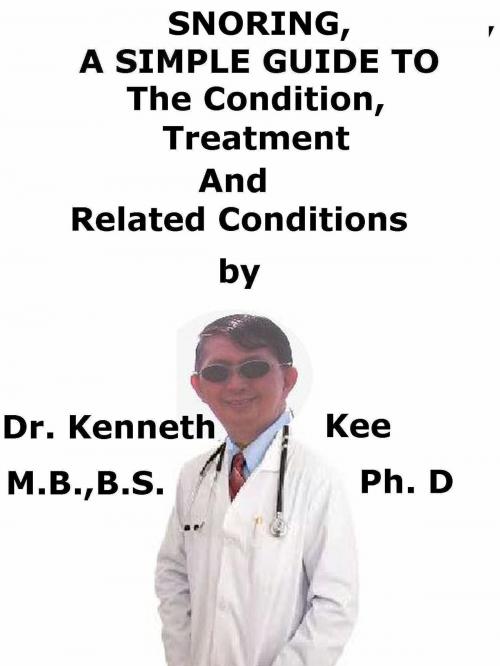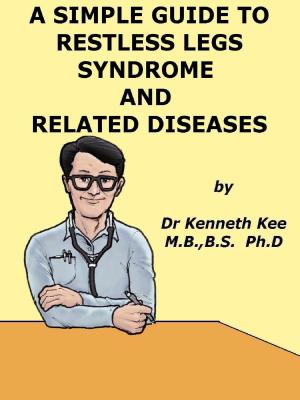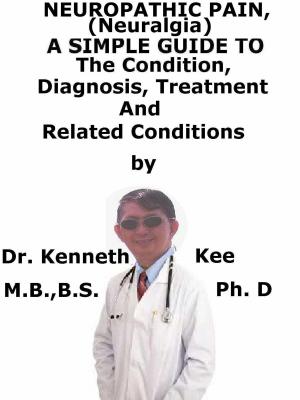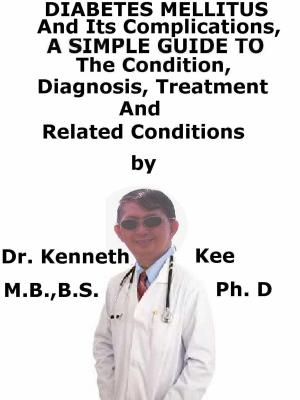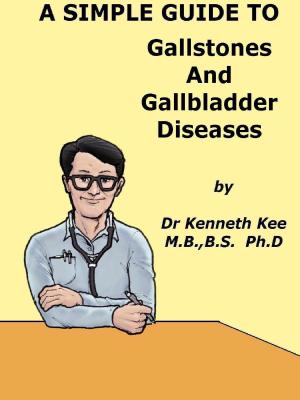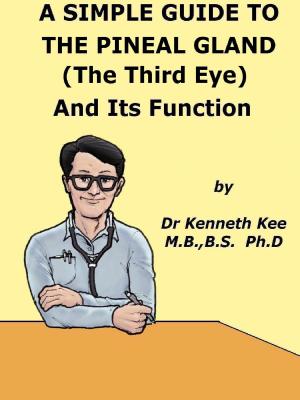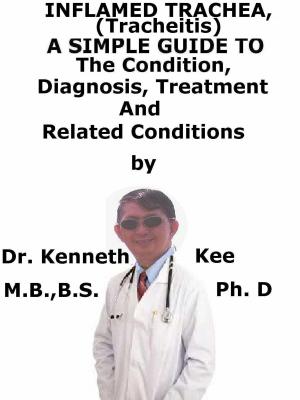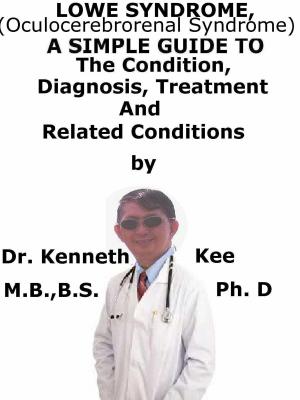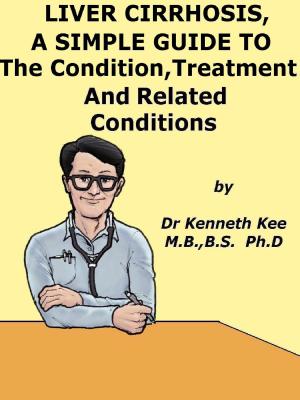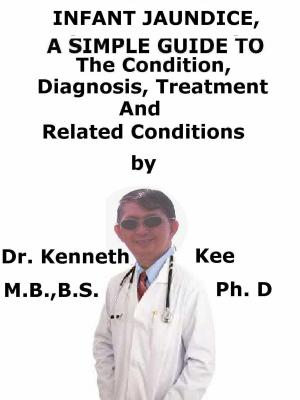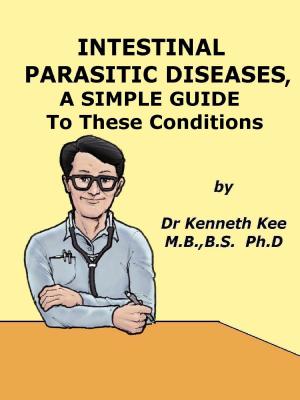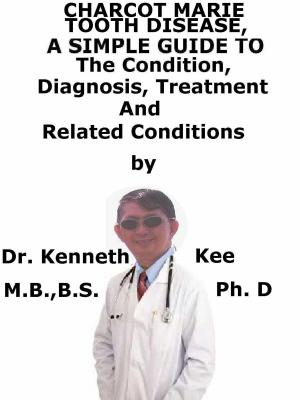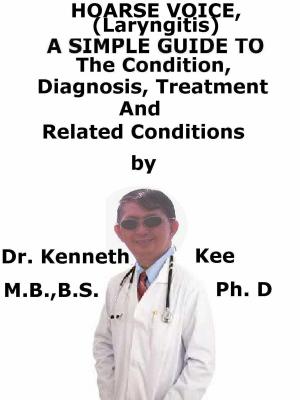Snoring, A Simple Guide To The Condition, Treatment And Related Conditions
Nonfiction, Health & Well Being, Medical, Specialties, Otorhinolaryngology, Health| Author: | Kenneth Kee | ISBN: | 9781311026484 |
| Publisher: | Kenneth Kee | Publication: | November 17, 2016 |
| Imprint: | Smashwords Edition | Language: | English |
| Author: | Kenneth Kee |
| ISBN: | 9781311026484 |
| Publisher: | Kenneth Kee |
| Publication: | November 17, 2016 |
| Imprint: | Smashwords Edition |
| Language: | English |
Snoring is the noise produced during sleep by vibrations of the soft tissues at the back of the nose and throat.
The noise is created by turbulent flow of air through narrowed air passages.
Snoring is the symptom of spectrum of problems including sleep disorders such as Obstructive Sleep Apnea during which breathing is interrupted during sleep.
A more serious problem related to snoring can occur when those same soft tissues block the air passages at the back of the throat while you are sleeping.
This interferes with the ability to breathe.
This condition is obstructive sleep apnea (OSA), and it can directly affect the health.
Snoring in most people is due to multiple factors each playing some part in the snoring process:
1. Inadequate muscle tone of the palate, tongue and pharynx leads to airway collapse during inspiration causing the walls of the airway to vibrate.
2. Bulky tissue in the upper respiratory airway (adenoids and tonsillar hypertrophy, cysts and tumors) cause narrowing of the airway and result in snoring.
3. Excessive soft palatial tissue or long uvula can also vibrate during breathing causing snoring.
4. A backward prolapsing tongue may fall backwards into the throat when sleeping on the back and contribute to snoring
5. Anatomical abnormalities in the nose(deviated nasal septum, hypertrophied inferior turbinates) or congested nasal passages (allergies, sinusitis, nasal polyps) can cause poor nasal inflow and make the soft tissues of the palate and throat vibrate.
Systemic disorders:
1. Hypothyroidism -large tongue
2. Acromegaly - large tongue
3. Heartburn resulting in congestion of the throat
4. Obesity - enlarged tongue or uvula
Diagnosis of Snoring is by:
A. Symptoms of snoring, nasal congestion and inadequate sleep
Signs:
1. Enlarged nasal turbinates, polyps, and nasal blockage
2. Enlarged tonsils and adenoids
3. Long uvula
4. Large protruding tongue
B. Sleep study using monitoring devices such as
a. Electroencephalogram (EEG)
b. Electro-oculogram (EOG)
c. 8. Snoring sounds
Treatment of Snoring is by:
A. Non Surgical treatment:
1. Continuous Positive Airway Pressure (CPAP)
CPAP administered by mask through the nose is the single most effective least invasive treatment for Obstructive Sleep Apnea.
It can improve all the bad effects of OSA.
2. Oral appliances that push the mandible forward and prevent it from falling open during sleep
3. Nasal Congestion treatment:
Patients with nasal congestion and blockage should be treated with antihistamine and decongestant
4. Weight reduction:
Any obese patients should have at least 10% of his weight reduced over a 6 months period
B. Surgical Treatments:
1. Surgery on the upper pharyngeal airway (uvula and palate)
a. Radiofrequency reduction of the palate and uvula shrinks the tissues of these and is indicated in simple snorer or mild OSA.
b. Uvulopalatopharyngoplasty (UPPP) surgery includes uvulectomy, palatal releasing and shortening incisions.
2. Surgery of the Tongue base:
Radiofrequency reduction is done for mild cases.
Advancement of the tongue, hyoid suspension is done under general anesthesia. All these enlarge the posterior airway space.
3. Maxillomandibular Advancement:
This is the most effective surgical procedure for treatment of OSA.
It causes enlargement of the pharyngeal and hypopharyngeal airway by physically expanding the skeletal framework.
TABLE OF CONTENT
Introduction
Chapter 1 Snoring
Chapter 2 More Facts about Snoring
Chapter 3 Treatment of Snoring
Chapter 4 OSA
Chapter 5 Narcolepsy
Chapter 6 Adenoiditis
Chapter 7 Tonsillitis
Epilogue
Snoring is the noise produced during sleep by vibrations of the soft tissues at the back of the nose and throat.
The noise is created by turbulent flow of air through narrowed air passages.
Snoring is the symptom of spectrum of problems including sleep disorders such as Obstructive Sleep Apnea during which breathing is interrupted during sleep.
A more serious problem related to snoring can occur when those same soft tissues block the air passages at the back of the throat while you are sleeping.
This interferes with the ability to breathe.
This condition is obstructive sleep apnea (OSA), and it can directly affect the health.
Snoring in most people is due to multiple factors each playing some part in the snoring process:
1. Inadequate muscle tone of the palate, tongue and pharynx leads to airway collapse during inspiration causing the walls of the airway to vibrate.
2. Bulky tissue in the upper respiratory airway (adenoids and tonsillar hypertrophy, cysts and tumors) cause narrowing of the airway and result in snoring.
3. Excessive soft palatial tissue or long uvula can also vibrate during breathing causing snoring.
4. A backward prolapsing tongue may fall backwards into the throat when sleeping on the back and contribute to snoring
5. Anatomical abnormalities in the nose(deviated nasal septum, hypertrophied inferior turbinates) or congested nasal passages (allergies, sinusitis, nasal polyps) can cause poor nasal inflow and make the soft tissues of the palate and throat vibrate.
Systemic disorders:
1. Hypothyroidism -large tongue
2. Acromegaly - large tongue
3. Heartburn resulting in congestion of the throat
4. Obesity - enlarged tongue or uvula
Diagnosis of Snoring is by:
A. Symptoms of snoring, nasal congestion and inadequate sleep
Signs:
1. Enlarged nasal turbinates, polyps, and nasal blockage
2. Enlarged tonsils and adenoids
3. Long uvula
4. Large protruding tongue
B. Sleep study using monitoring devices such as
a. Electroencephalogram (EEG)
b. Electro-oculogram (EOG)
c. 8. Snoring sounds
Treatment of Snoring is by:
A. Non Surgical treatment:
1. Continuous Positive Airway Pressure (CPAP)
CPAP administered by mask through the nose is the single most effective least invasive treatment for Obstructive Sleep Apnea.
It can improve all the bad effects of OSA.
2. Oral appliances that push the mandible forward and prevent it from falling open during sleep
3. Nasal Congestion treatment:
Patients with nasal congestion and blockage should be treated with antihistamine and decongestant
4. Weight reduction:
Any obese patients should have at least 10% of his weight reduced over a 6 months period
B. Surgical Treatments:
1. Surgery on the upper pharyngeal airway (uvula and palate)
a. Radiofrequency reduction of the palate and uvula shrinks the tissues of these and is indicated in simple snorer or mild OSA.
b. Uvulopalatopharyngoplasty (UPPP) surgery includes uvulectomy, palatal releasing and shortening incisions.
2. Surgery of the Tongue base:
Radiofrequency reduction is done for mild cases.
Advancement of the tongue, hyoid suspension is done under general anesthesia. All these enlarge the posterior airway space.
3. Maxillomandibular Advancement:
This is the most effective surgical procedure for treatment of OSA.
It causes enlargement of the pharyngeal and hypopharyngeal airway by physically expanding the skeletal framework.
TABLE OF CONTENT
Introduction
Chapter 1 Snoring
Chapter 2 More Facts about Snoring
Chapter 3 Treatment of Snoring
Chapter 4 OSA
Chapter 5 Narcolepsy
Chapter 6 Adenoiditis
Chapter 7 Tonsillitis
Epilogue
